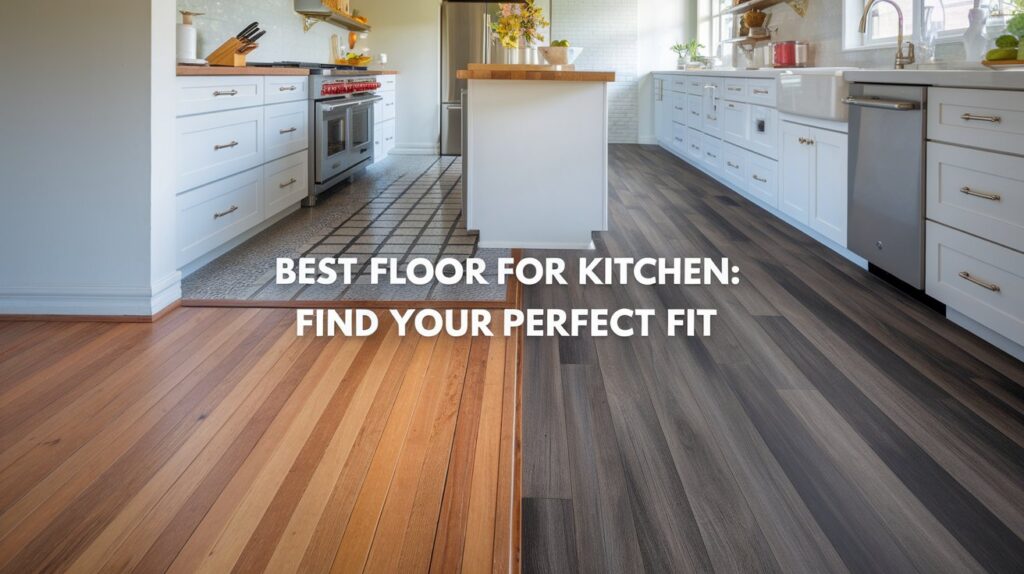Selecting the best kitchen flooring doesn’t have to be complicated. As someone who’s helped house hunters choose the best floors for their homes, not just for the pages of magazines, I’m here to help.
Your kitchen is put through a lot. Kids run through, pets scratch. The right flooring can handle it all.
This post will walk you through 15 kitchen flooring options and discuss water resistance, durability, comfort, and cost.
I’ll show you which floors work for busy families. I will also show you which ones are easy on the budget and which ones stand up to heavy use.
Clear answers, with no jargon.
Factors to Consider When Choosing Kitchen Flooring
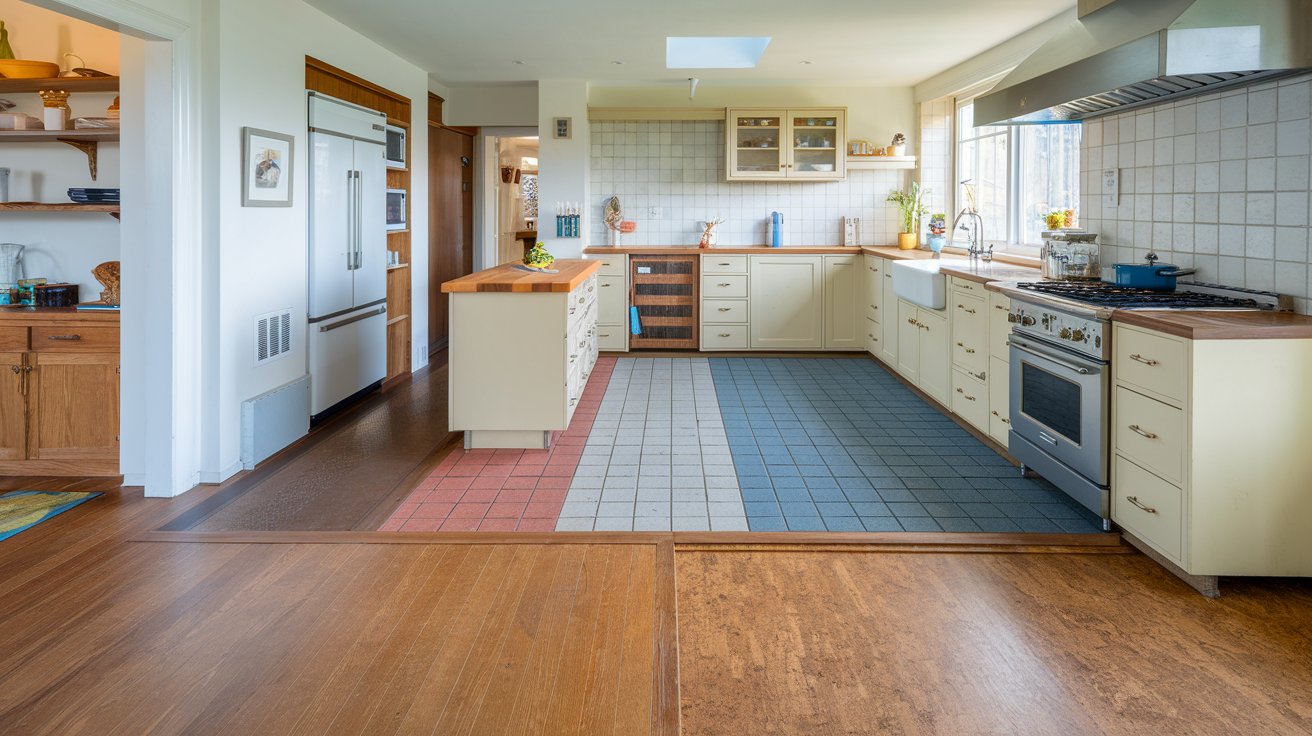
Your kitchen floor takes a beating every single day. Choosing wisely means thinking beyond just looks. Durability matters most in high-traffic areas, especially with kids, pets, or busy mornings.
Water resistance saves you headaches since kitchens see constant spills. Ease of cleaning gives you time back, so pick what fits your schedule.
Comfort counts when you cook for hours, as hard floors tire your feet and legs. Style and appearance should match your cabinets, counters, and overall design.
Budget shapes your choices, balancing upfront costs with long-term value.
15 Best Flooring Options for Your Kitchen
Let’s look at the top flooring choices that can work perfectly in your kitchen space.
1. Ceramic Tile Flooring
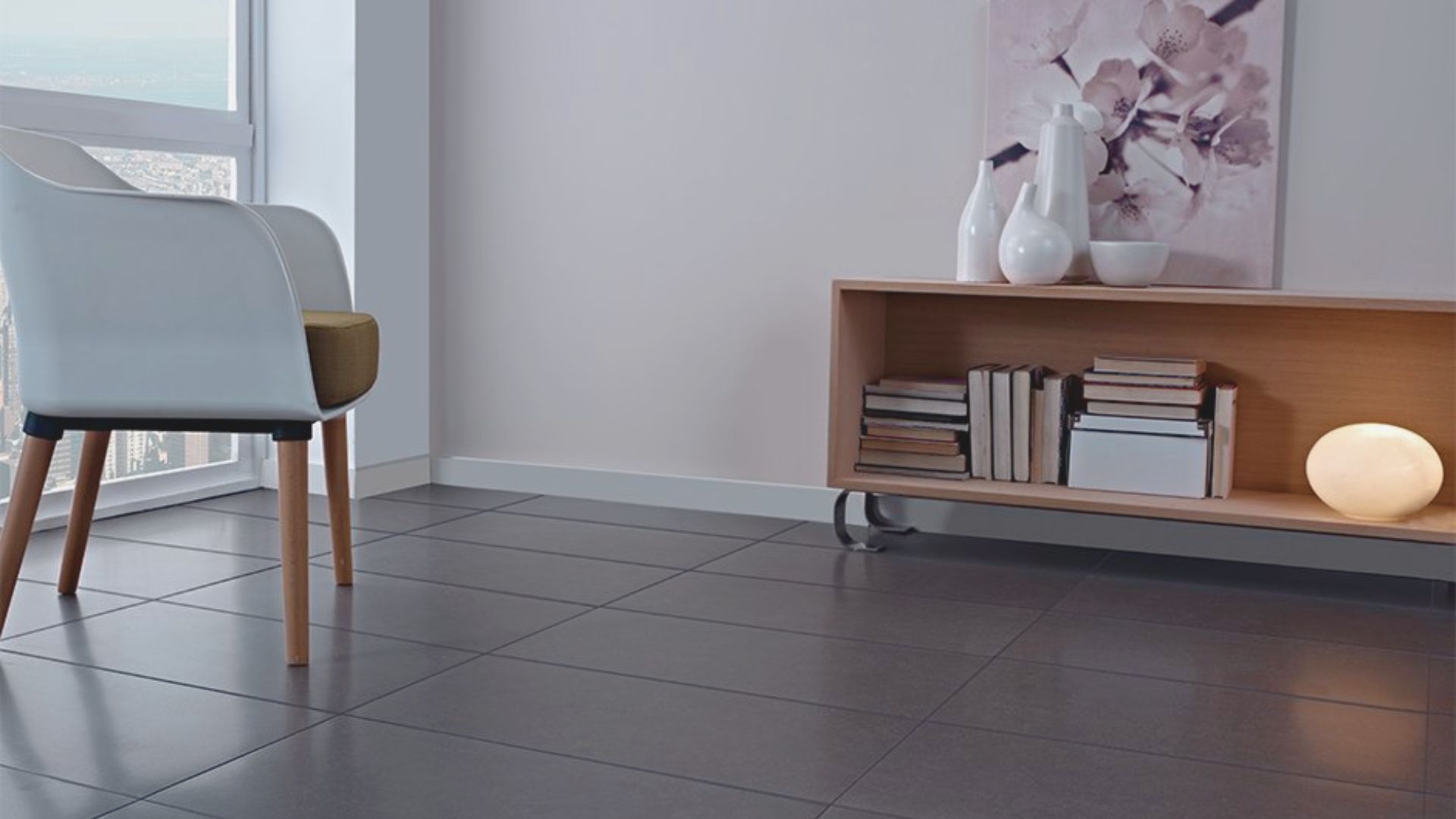
Ceramic tiles stand up to kitchen chaos. They handle drops, spills, and years of use without showing much wear.
Benefits:
Ceramic lasts for decades when installed correctly. The material resists water and heat naturally. Spills wipe up in seconds. You can find ceramic in countless colors and patterns. Some tiles look just like wood or stone but cost much less.
Drawbacks:
Standing on ceramic for long periods feels hard on your feet and back. Tiles can crack if something heavy drops or if installation wasn’t done properly. The grout lines need occasional cleaning to prevent staining.
2. Porcelain Tile Flooring
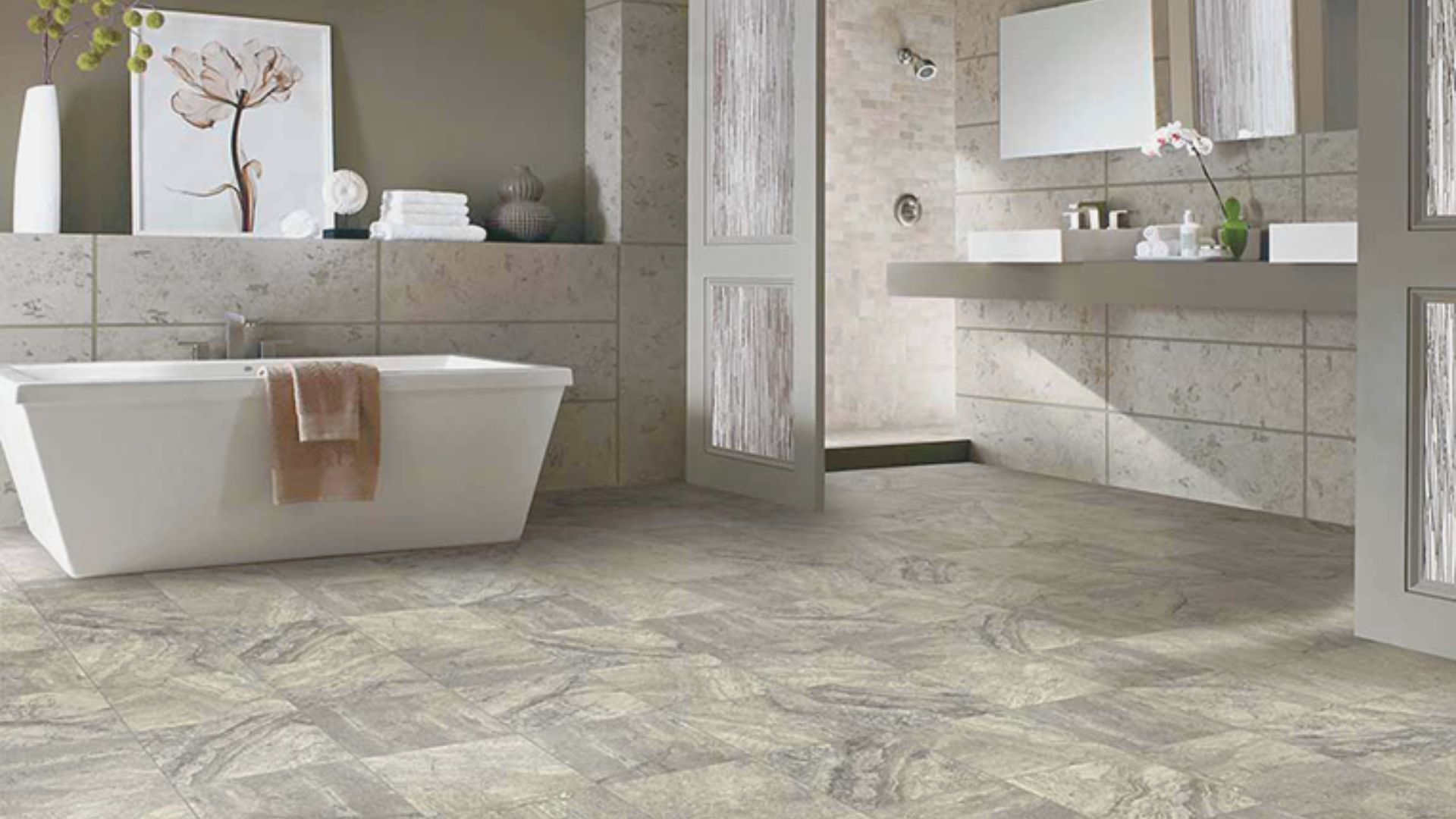
Porcelain takes ceramic’s strengths and amplifies them. This denser material works perfectly in busy kitchens.
Benefits:
Porcelain has less porosity than ceramic. That means better moisture protection and fewer stains. It mimics natural materials beautifully. You get the look of expensive stone or hardwood at a fraction of the cost.
Drawbacks:
The hardness that makes porcelain durable also makes it brittle. Cutting tiles for installation takes special tools. DIY projects become trickier. Professional installation often works better.
3. Natural Stone Flooring
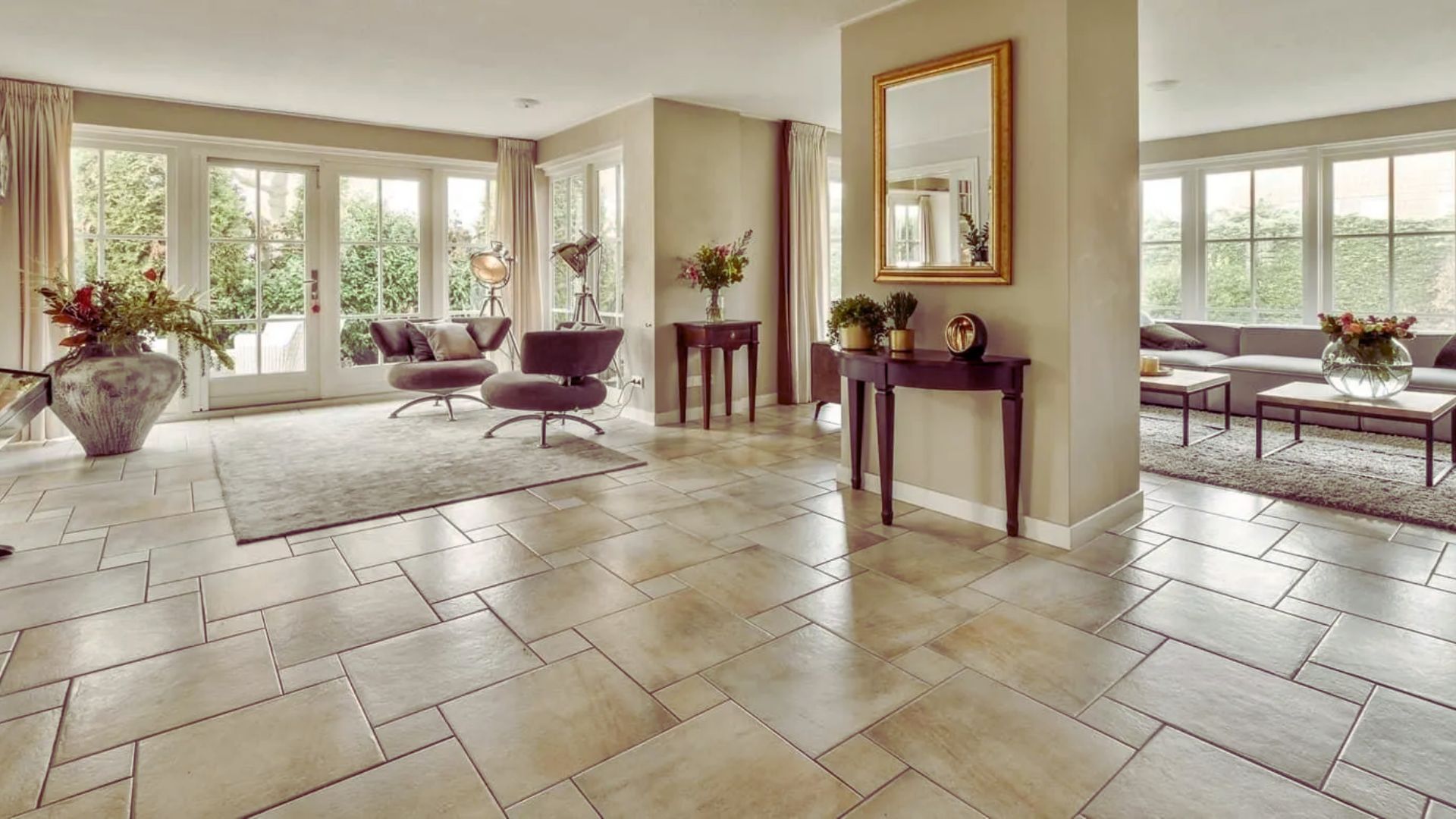
Stone brings luxury into your kitchen. Each piece looks unique and timeless.
Benefits:
Stone floors make a statement. They resist heat and impacts well. With proper sealing, they last generations. The natural variations mean no two kitchens look identical.
Drawbacks:
Stone is porous without sealant. You need to reseal regularly to prevent stains. Some types scratch easier than others. Marble and limestone need more care than granite or slate.
4. Concrete Flooring
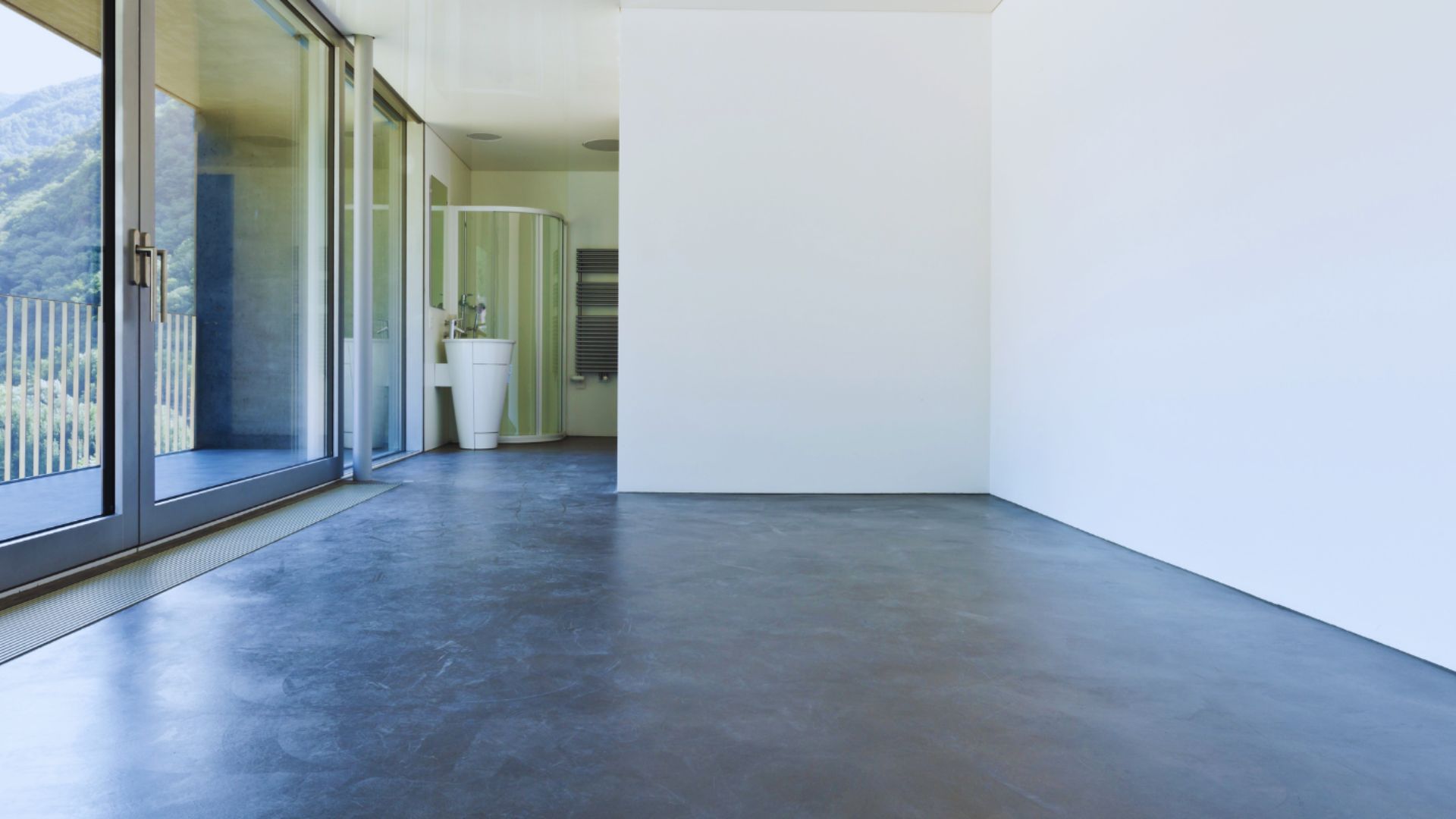
Concrete has moved beyond basements and garages. Modern kitchens embrace its industrial charm.
Benefits:
Concrete survives almost anything. You can polish it smooth, stain it any color, or add texture. It handles heat without damage. Dropped items rarely harm the surface.
Drawbacks:
Unsealed concrete absorbs liquids and stains. It feels cold, especially in winter. Standing on it for long periods can be uncomfortable. The industrial look doesn’t suit traditional or cozy kitchen styles.
Concrete survives almost anything. You can polish it smooth, stain it any color, or add texture. It handles heat without damage. Dropped items rarely harm the surface. For homeowners seeking to renew or enhance their existing concrete, Concrete Resurfacing Las Vegas offers an affordable and efficient way to restore worn-out surfaces. Through modern resurfacing techniques, old concrete can be transformed with decorative overlays, stamped textures, or vibrant stains—giving patios, driveways, and pool decks a brand-new look without the need for a full replacement. This process not only improves durability and appearance but also extends the lifespan of the concrete, making it a smart investment for both residential and commercial properties.
5. Brick Flooring
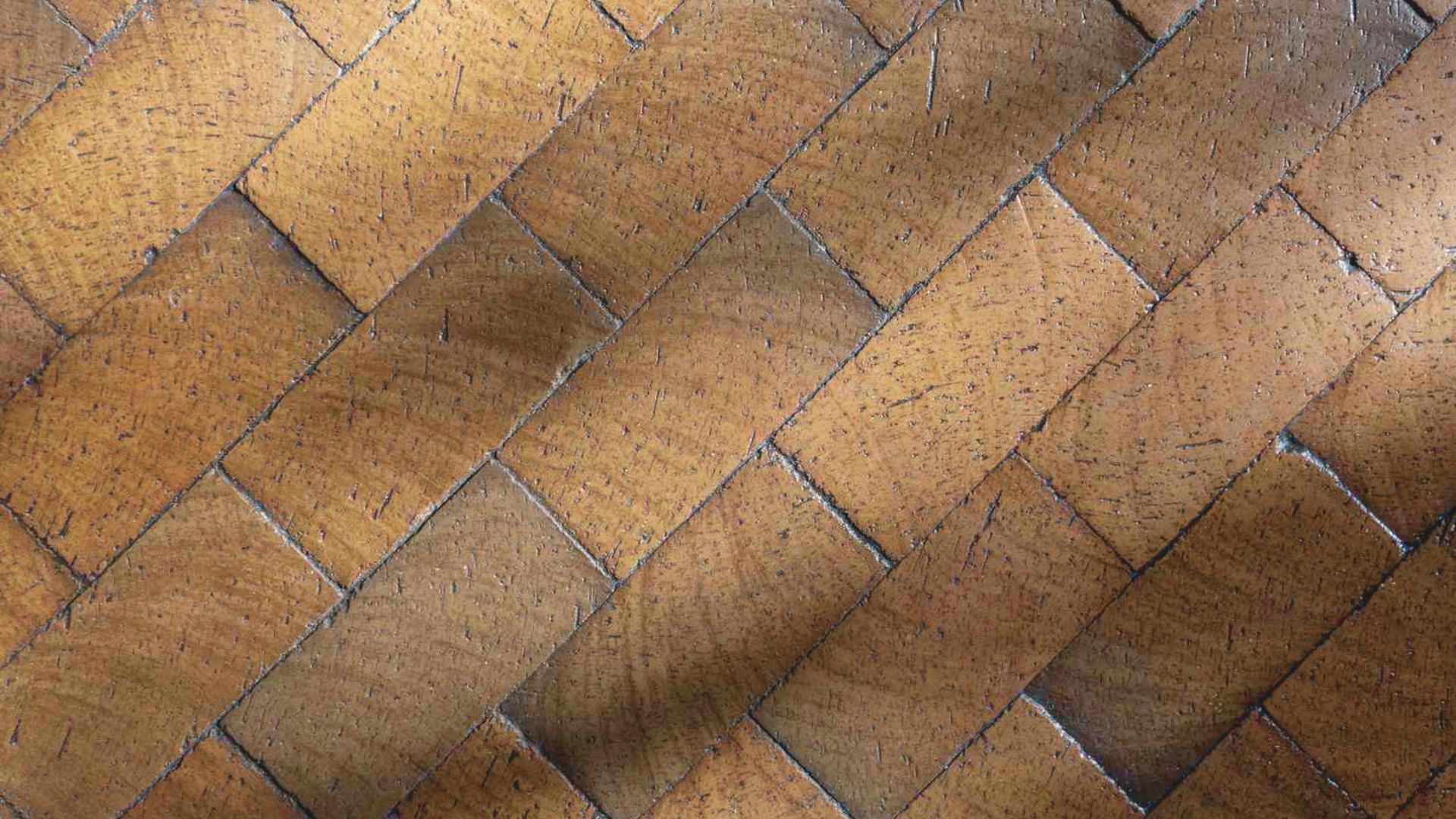
Brick adds character and history to kitchens. It works in both old homes and new builds.
Benefits:
Brick handles wear remarkably well. Heat doesn’t bother it. The rustic or industrial appearance adds personality. It brings warmth through its earthy red and brown tones.
Drawbacks:
Like stone, brick is porous. Annual sealing prevents moisture problems. The hard surface tires your feet during long cooking sessions. Dropped dishes often break on impact.
6. Hardwood Flooring
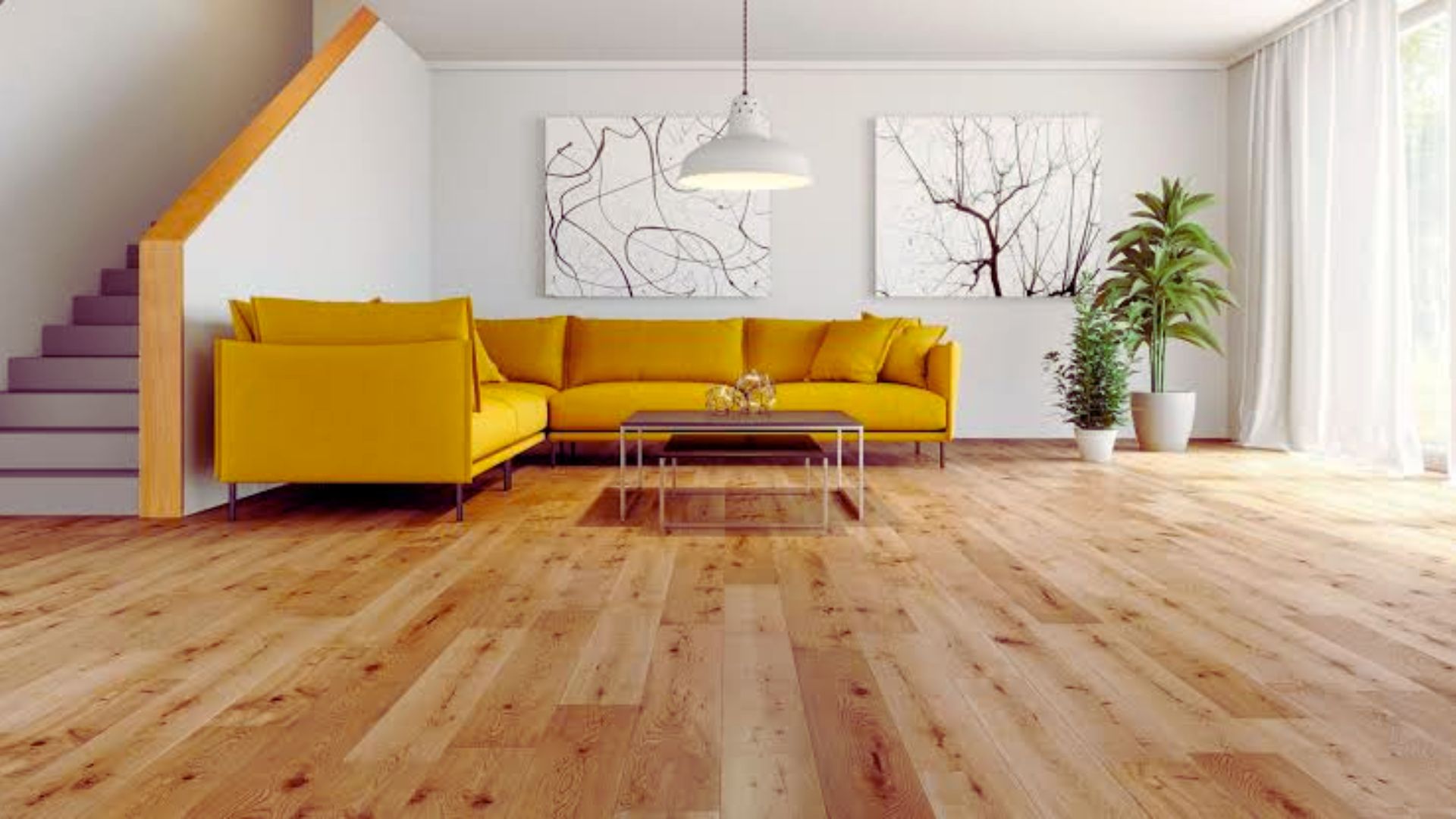
Wood brings warmth no other material can match. It makes kitchens feel inviting and homey.
Benefits:
Hardwood creates a classic look that never goes out of style. You can sand and refinish it multiple times over its life. It adds real value when selling your home. The natural grain patterns make each floor unique.
Drawbacks:
Water is hardwood’s enemy. Spills need immediate cleanup. Dents happen from dropped items. Regular maintenance includes refinishing every few years. Installation costs run high, and the process takes time.
7. Bamboo Flooring
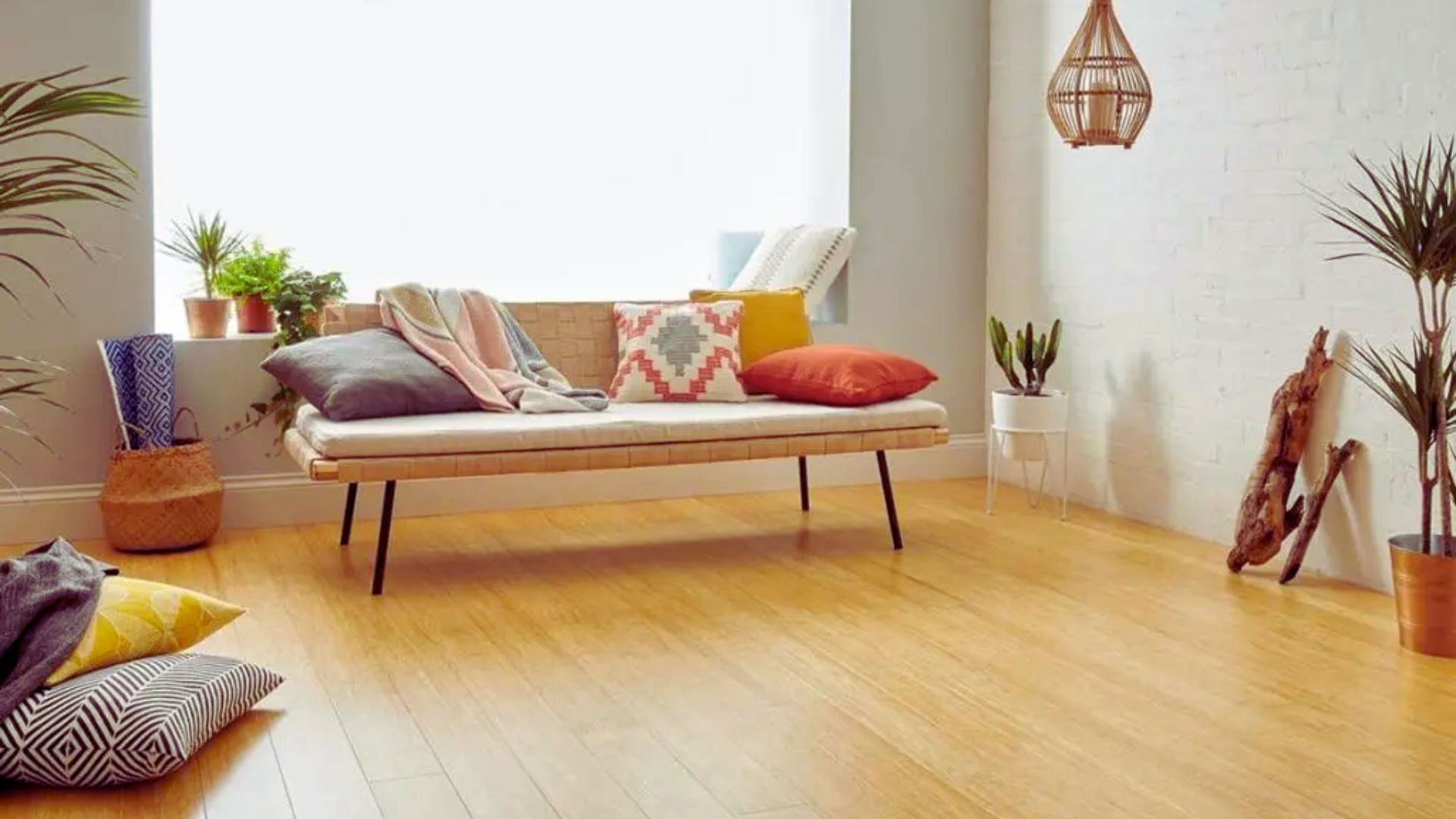
Bamboo offers wood’s beauty with better eco-credentials. It grows back quickly, making it renewable.
Benefits:
Bamboo grows sustainably. It resists water better than most hardwoods. The material is actually harder than oak or maple. It gives you that wood appearance without depleting forests.
Drawbacks:
Color and grain vary between batches. Matching future repairs can be tricky. Solid bamboo still struggles with excessive moisture. Quality varies widely between manufacturers.
8. Luxury Vinyl Plank (LVP) Flooring
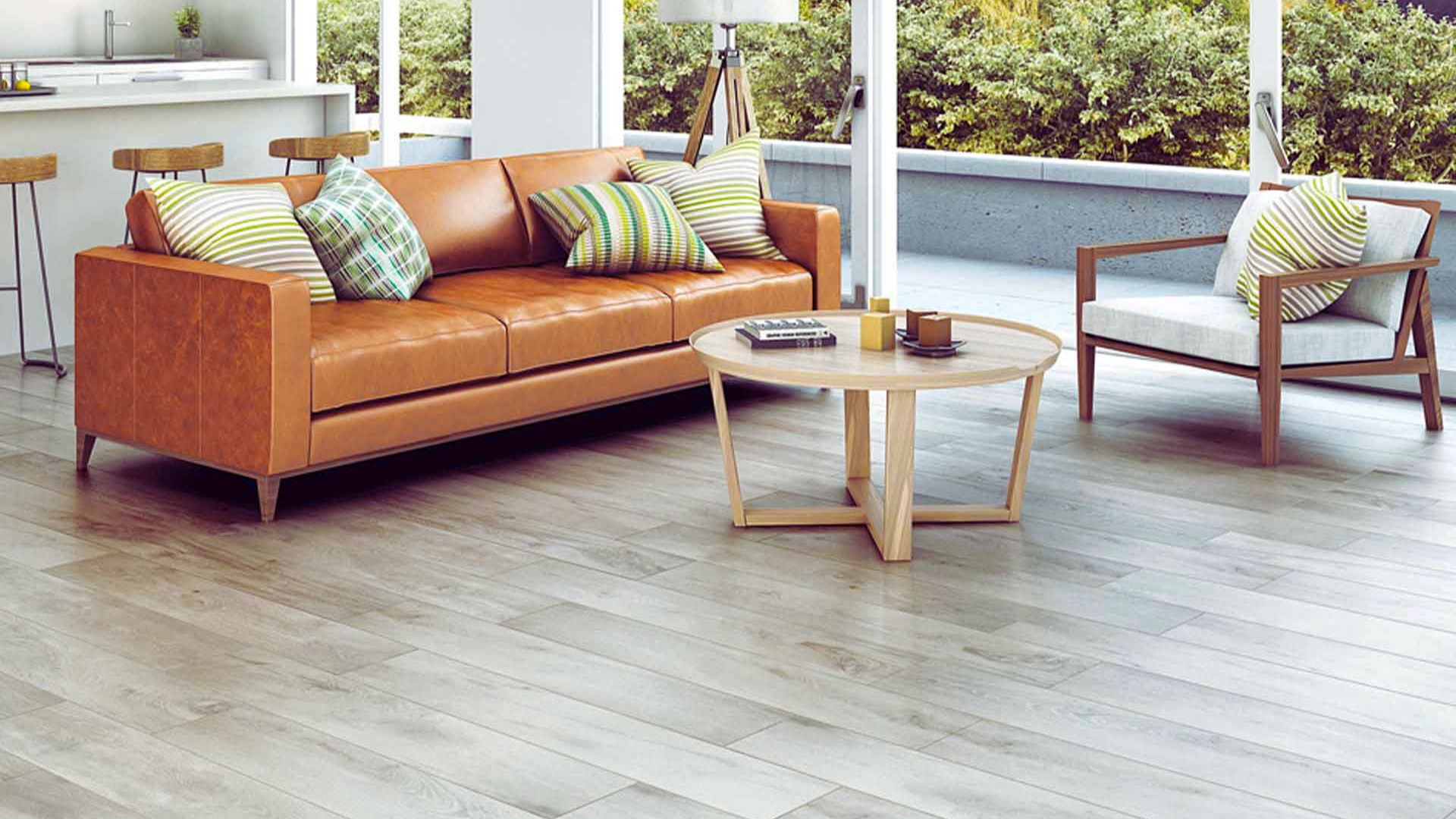
LVP has revolutionized kitchen flooring. It looks high-end but performs practically.
Benefits:
True waterproof protection means no worries about spills. Scratches barely show on quality LVP. The realistic wood and stone patterns fool most people. It feels softer underfoot than tile. Many products are installed with simple click-lock systems.
Drawbacks:
Sunlight can fade colors over years. Budget LVP wears out faster than premium versions. Heavy furniture can leave permanent dents. It doesn’t add resale value like real wood or stone.
9. Luxury Vinyl Tile (LVT) Flooring
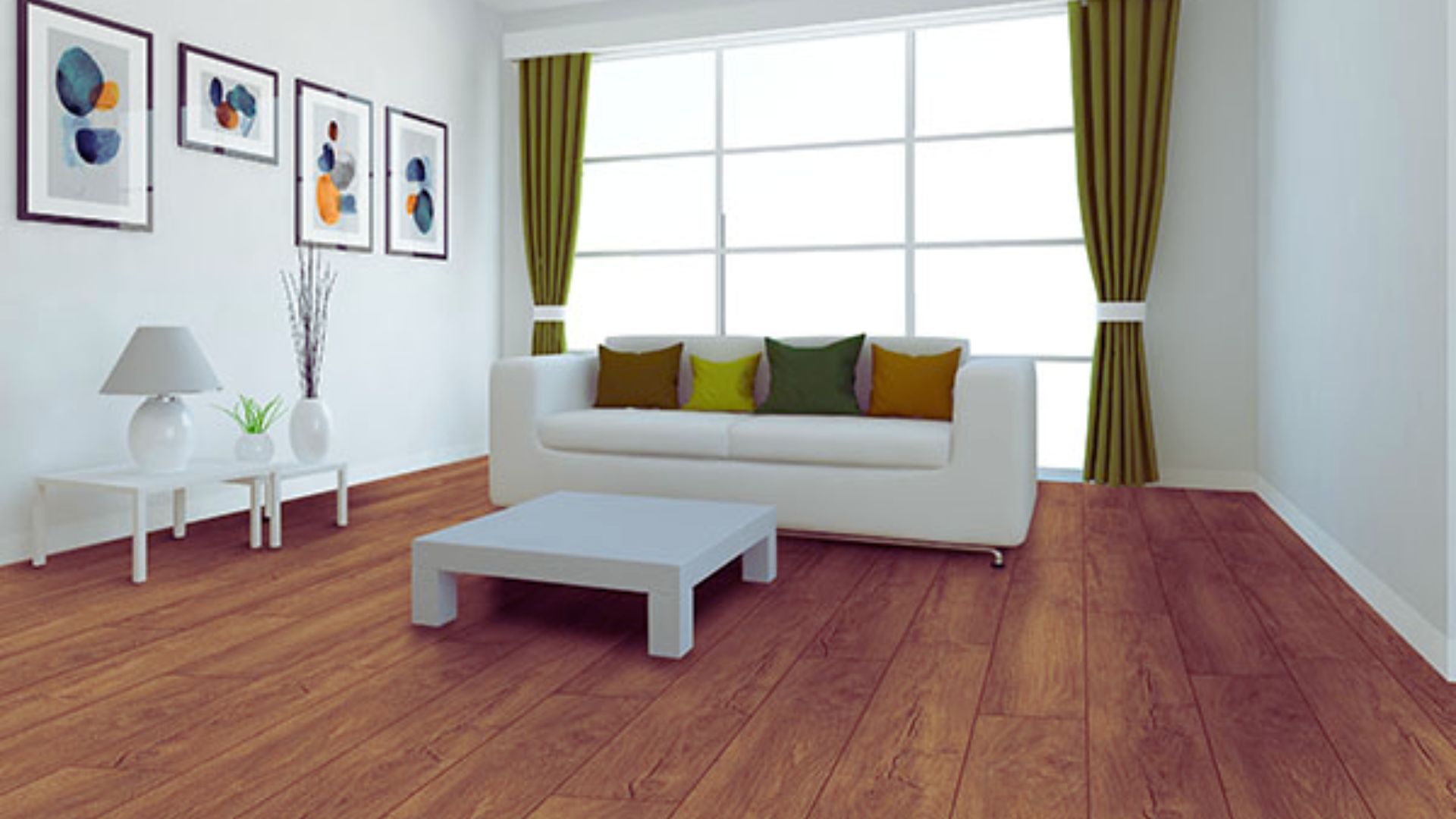
LVT gives you a tile’s look without the cold, hard feel. It’s become a kitchen staple.
Benefits:
LVT costs much less than ceramic or porcelain. Water can’t damage it. Installation goes quickly, even for beginners. It comes in countless tile patterns and colors.
Drawbacks:
High-traffic spots can show wear over time. It never quite matches the luxurious feel of real stone or ceramic. Some versions can look obviously fake up close.
10. Sheet Vinyl Flooring
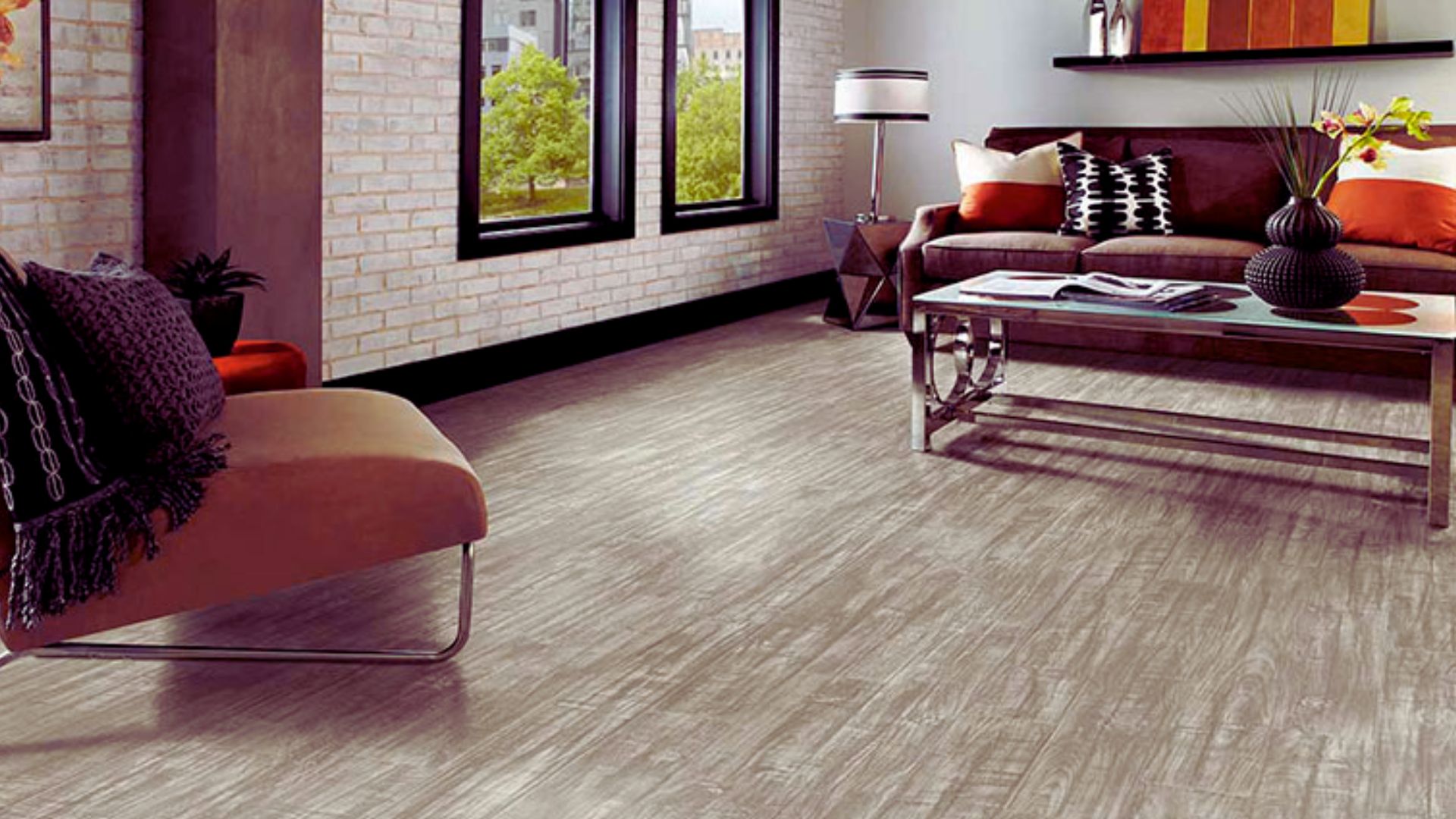
Sheet vinyl offers simplicity. One piece covers your floor with minimal seams.
Benefits:
The seamless surface keeps water from seeping through. Installation happens fast. It feels comfortable under your feet. Walking on it stays quiet compared to hard tiles.
Drawbacks:
Sheet vinyl doesn’t last as long as plank or tile versions. Damage to one area often means replacing larger sections. It can look dated if you pick the wrong pattern.
11. Laminate Flooring
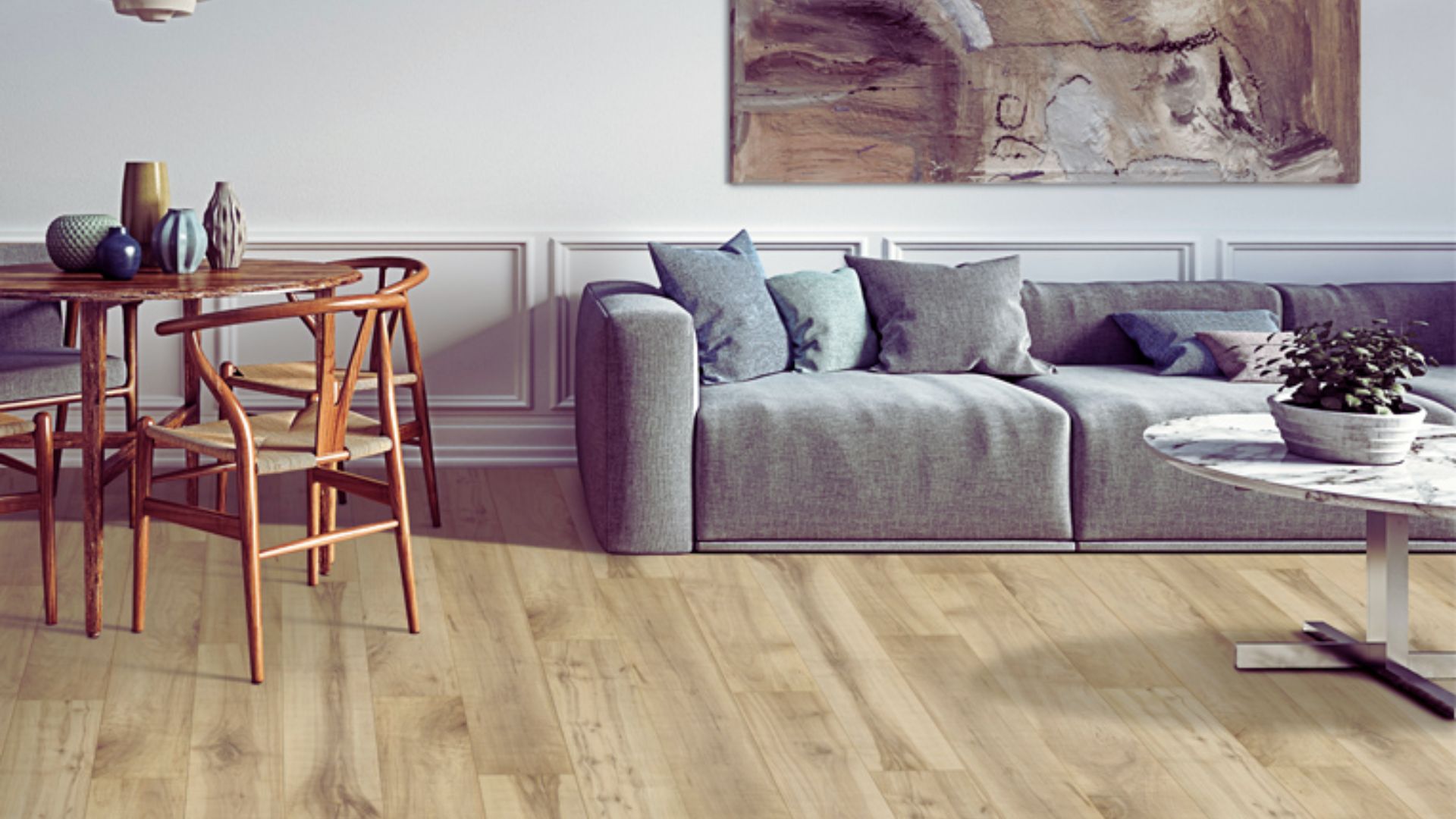
Laminate brings style on a budget. It’s a smart choice for cost-conscious renovations.
Benefits:
Low prices make laminate accessible. It resists scratches and stains well. Click-lock installation means easy DIY projects. Styles range from modern to traditional, mimicking wood and stone.
Drawbacks:
Water exposure causes swelling and damage. Once damaged, you can’t refinish laminate like hardwood. Seams can be visible. It feels and sounds more hollow than real wood.
12. Cork Flooring
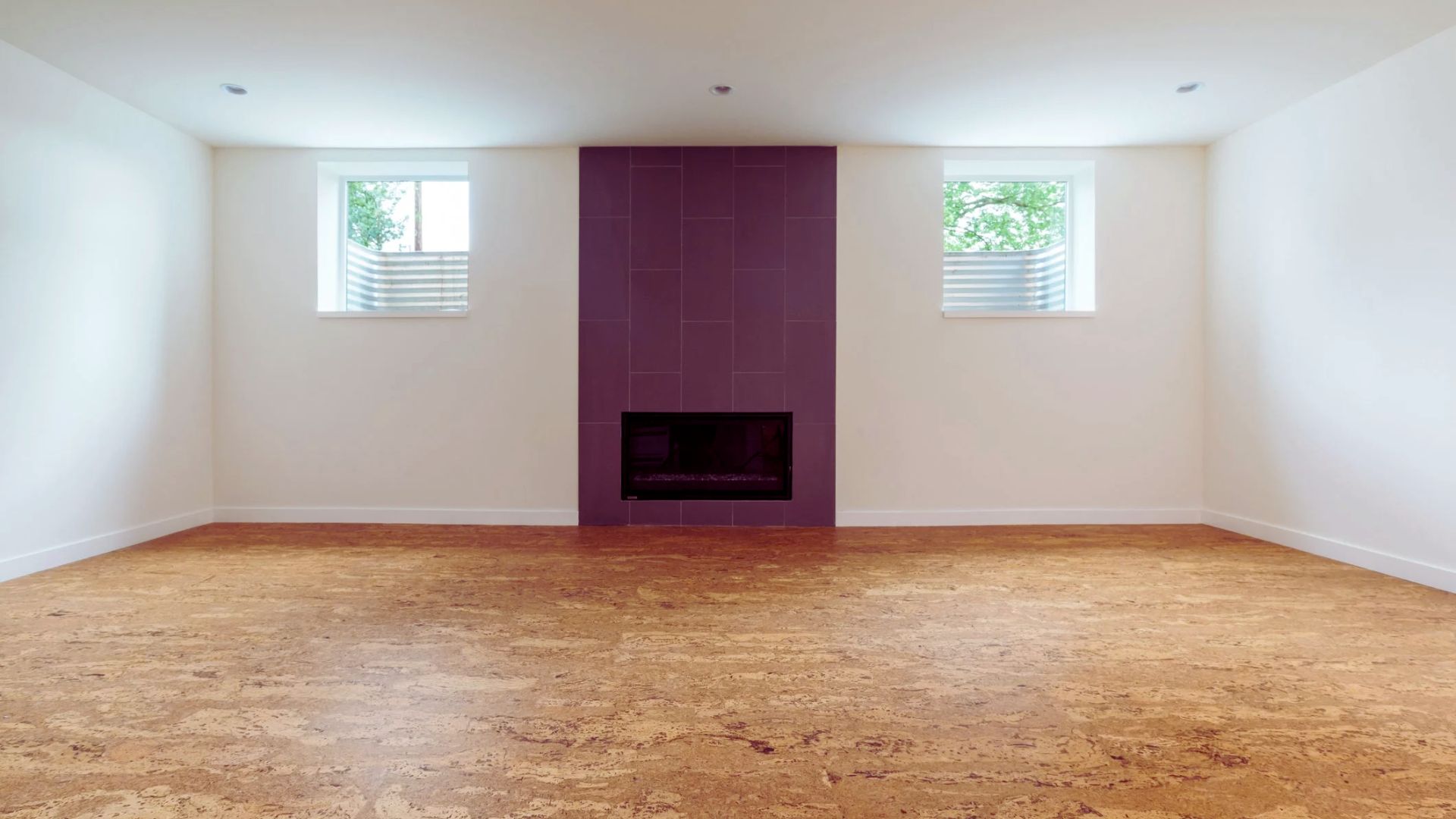
Cork surprises people. This eco-friendly option offers unique benefits.
Benefits:
Cork comes from tree bark that regrows. It feels cushiony and warm underfoot. The material insulates against temperature and sound naturally. Mold and pests avoid it naturally.
Drawbacks:
Heavy items dent cork easily. Sharp objects scratch the surface. Moisture penetrates without proper sealing. You need to reseal every year or two to maintain protection.
13. Linoleum Flooring
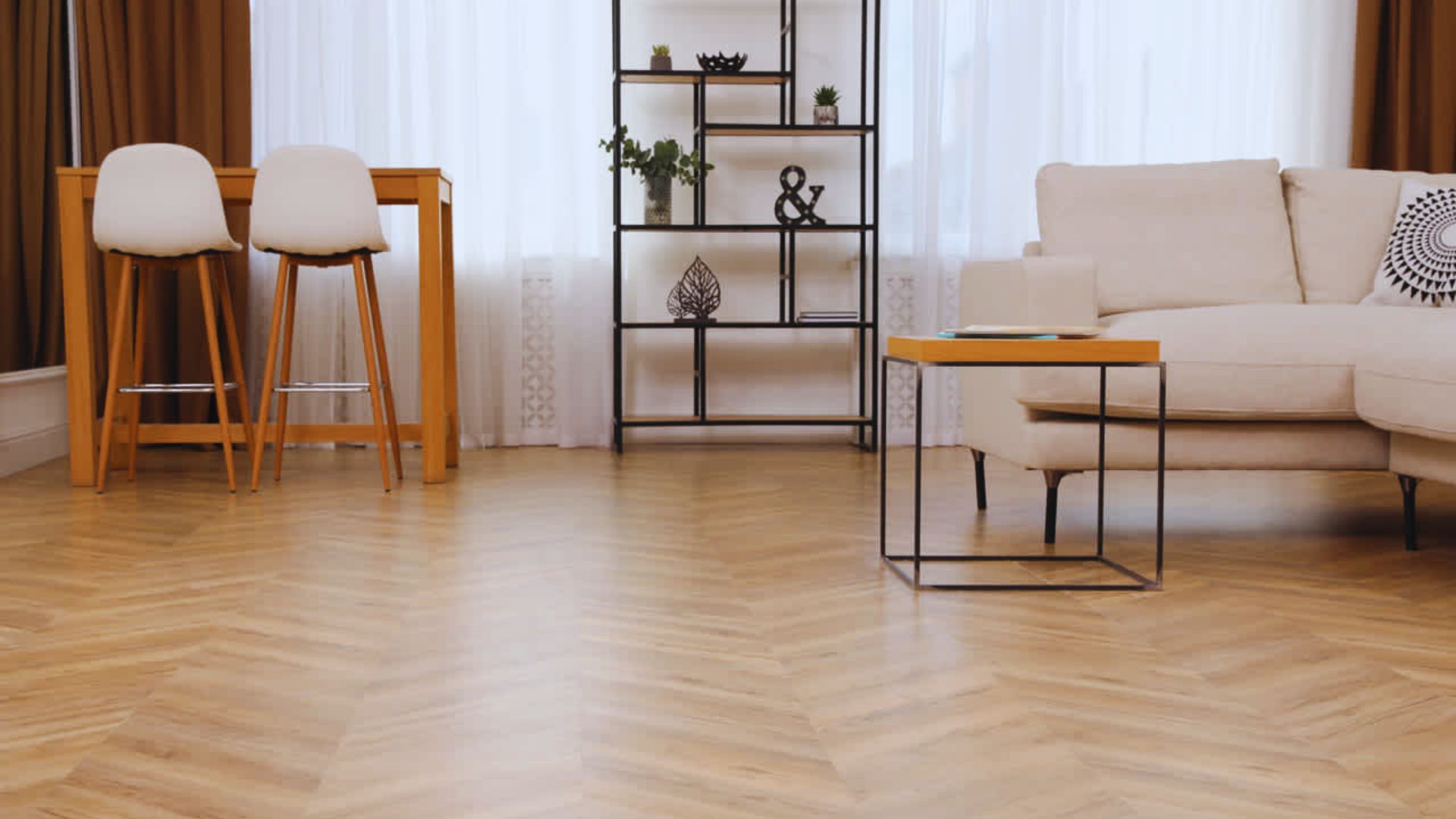
Real linoleum differs from vinyl. This natural material deserves consideration.
Benefits:
Linoleum uses renewable ingredients like linseed oil. Cleaning takes minimal effort. Colors and patterns run through the entire thickness. Prices stay reasonable for most budgets.
Drawbacks:
Standing water damages linoleum over time. It doesn’t last as long as tile or quality vinyl. Color options, while varied, can look retro in ways that don’t suit every kitchen.
14. Hybrid-Resilient Flooring
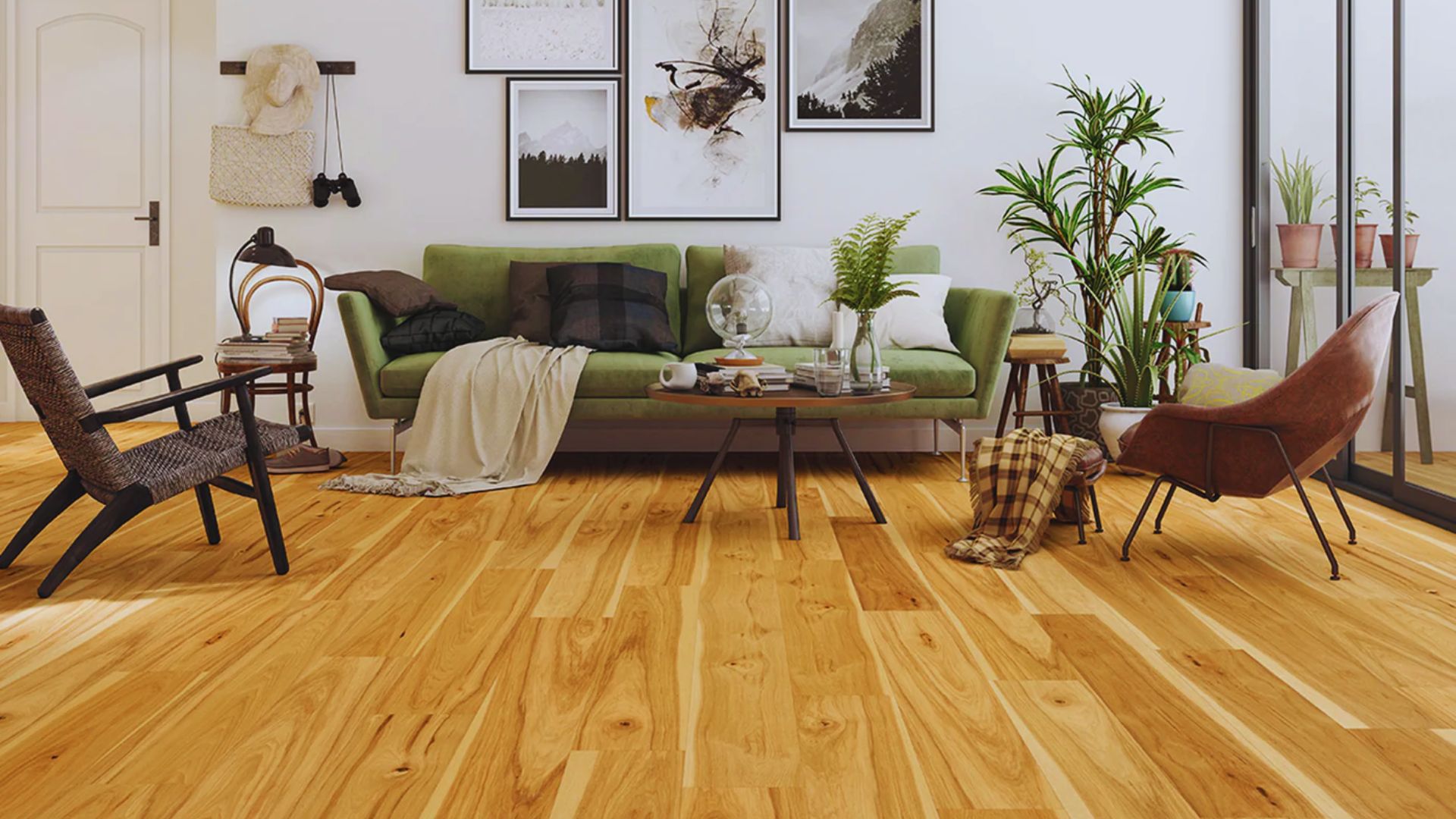
Hybrid flooring combines the best features of laminate and vinyl. It’s the new kid making waves.
Benefits:
You get laminate’s toughness plus vinyl’s water resistance. Scratches and dents barely affect it. Many versions skip PVC, making them more eco-friendly. The wood looks are incredibly realistic.
Drawbacks:
Premium pricing puts it above standard vinyl or laminate. Your subfloor needs to be level and prepared properly. Availability can be limited compared to more common options.
15. Concrete Overlay or Polished Concrete
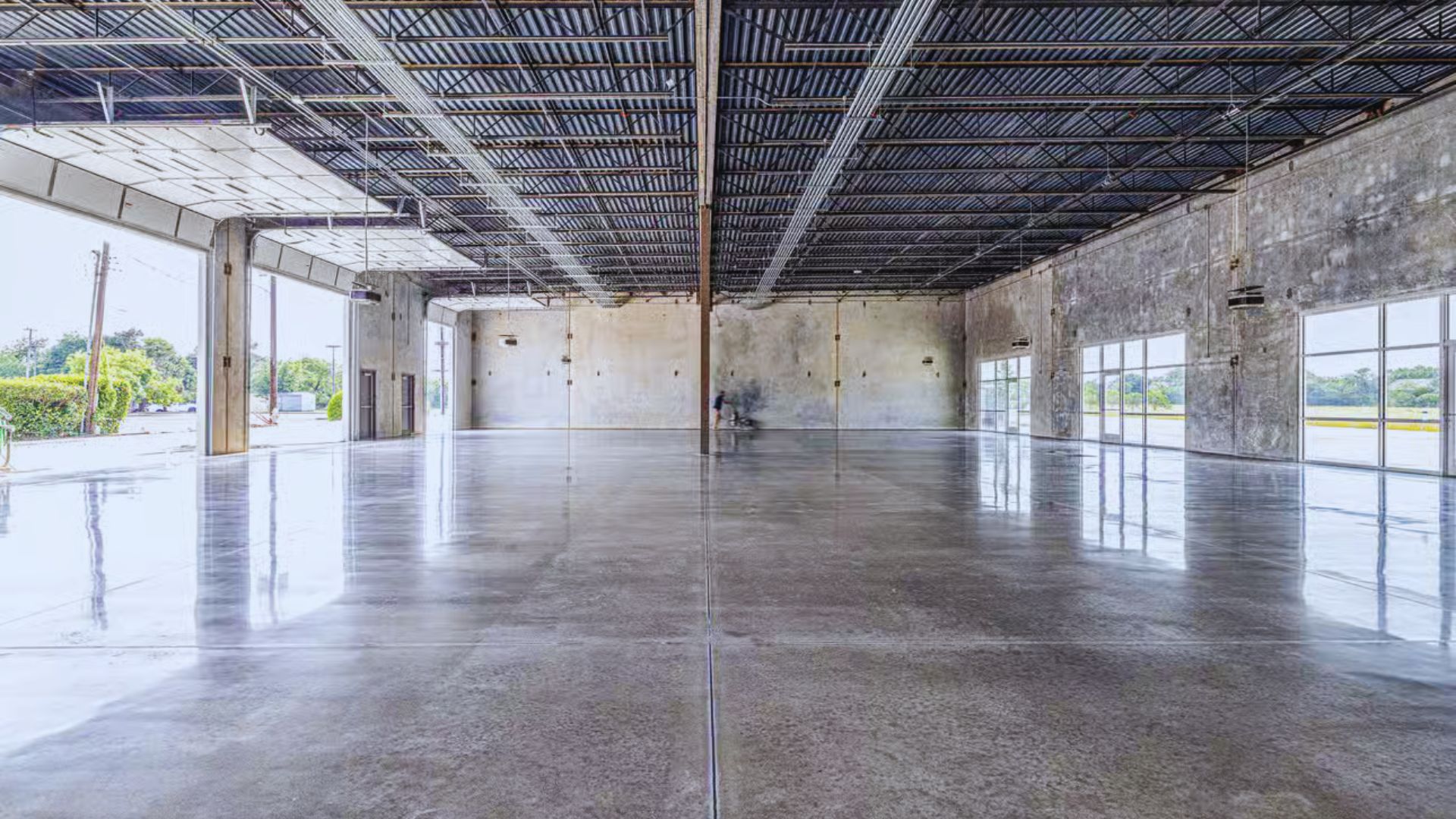
Concrete overlays refresh existing floors. Polished concrete turns industrial into intentional.
Benefits:
Customization options are nearly limitless. The modern look suits contemporary kitchens perfectly. It handles heat and impacts without damage. Durability rivals or beats most other options.
Drawbacks:
The cold, hard surface gets uncomfortable during extended standing. Water resistance requires proper sealing. Installation needs professional expertise. The stark look doesn’t fit every home style.
Tips to Choose the Best Floor for Your Kitchen
You’ve seen the options. Now let’s match one to your life.
- Consider Durability: Think about your daily reality. Large family? Active kids? Pets with claws? Heavy foot traffic means you need materials that take a beating. Ceramic, porcelain, and quality vinyl handle chaos well.
- Water Resistance: Kitchens and water go together. Spills happen daily. Some materials laugh off moisture. Others absorb it and suffer. Waterproof options like LVP, LVT, and porcelain tile protect your investment.
- Ease of Cleaning: Life gets busy. You don’t have time for high-maintenance floors. Tile and vinyl wipe clean in seconds. Wood and cork need more attention. Match your cleaning tolerance to your floor choice.
- Comfort Underfoot: Do you cook elaborate meals? Stand for hours prepping food? Softer materials like cork, vinyl, and linoleum reduce fatigue. Your feet and back will thank you.
- Style and Appearance: Your floor should complement your kitchen design. Modern spaces suit concrete and sleek tiles. Traditional kitchens shine with hardwood. Rustic styles work well with brick or reclaimed looks. Consider your cabinets, countertops, and overall home appearance.
- Budget Considerations: Money matters. Affordable options include vinyl, laminate, and linoleum. These deliver quality without breaking the bank. Premium choices like hardwood, natural stone, and bamboo cost more upfront but can last decades. Consider both installation costs and long-term value.
Conclusion
Once I picked my kitchen floor I had no regrets, and you will too. The best kitchen floor works for your life. It is not the one that looks best in a magazine.
Be sure to go out and obtain some samples this weekend. The moment of discovery will be apparent.
Are you learning? Is there flooring toward which you are leaning? Tell me in the comments down below if any of these resonated.
Frequently Asked Questions
What is the most durable floor for kitchen use?
Porcelain tile and concrete are among the most durable options. They handle heavy traffic, resist water completely, and last for decades with minimal maintenance.
Can I install hardwood flooring in my kitchen?
You can, but engineered hardwood works better than solid wood. Engineered versions handle humidity changes better while still offering that beautiful wood appearance.
How much does kitchen flooring typically cost?
Vinyl and laminate start around two to five dollars per square foot. Premium materials like hardwood and natural stone cost fifteen dollars and up per square foot.
What kitchen flooring is easiest to clean?
Tile and luxury vinyl win for easy cleaning. Both wipe clean quickly and resist stains naturally.
Is luxury vinyl plank good for kitchens?
Yes, LVP excels in kitchens. It’s completely waterproof, comfortable underfoot, and looks like real wood.

